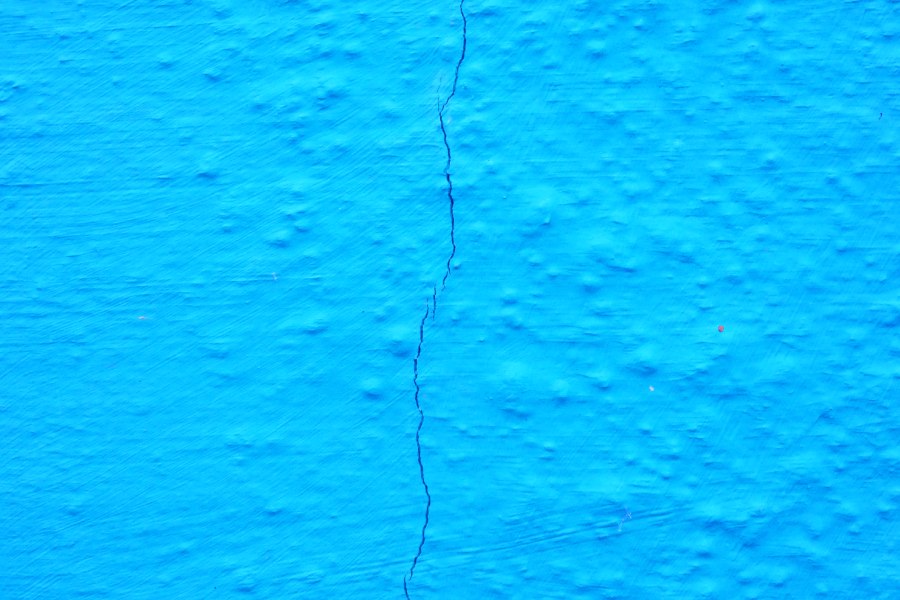A sparkling, well-maintained swimming pool is the centerpiece of many backyards, providing a refreshing oasis for relaxation and entertainment. However, the discovery of a crack in your concrete pool can quickly turn this source of joy into a cause for concern.
Whether it’s a hairline fracture or a more substantial fissure, cracks in pool structures are not just cosmetic issues. They can lead to water loss, structural damage, and even potential safety hazards if left unaddressed. For pool owners facing this dilemma, the prospect of repair can seem daunting.
Knowing how to repair a crack in a concrete swimming pool is essential to dealing with any complications that may arise later. Factors such as the pool’s age, local soil conditions, and previous maintenance history can all contribute to the development of cracks.
In this comprehensive guide, we’ll explore the world of concrete pool repair, equipping you with the knowledge to assess, prepare, and tackle this common yet challenging maintenance issue.

How to Repair a Crack in a Concrete Swimming Pool
The following steps will help you learn how to fix a crack in a concrete pool effectively.
1. Identifying the crack
Types of cracks
Cracks in concrete swimming pools come in two main types – surface cracks and structural cracks. Surface cracks are shallow and usually appear on the pool’s surface as spider webs or thin lines. They’re common in older pools and often caused by temperature changes or normal settling.
Structural cracks, on the other hand, are deeper and go through the pool’s shell. These can cause leaks and are usually wider than surface cracks. They’re more serious and often result from ground movement or poor construction.
Tools needed for inspection
To properly inspect your pool for cracks, you’ll need some basic tools. A good flashlight and a magnifying glass will help you see small cracks clearly. A measuring tape is useful for tracking crack size, and a camera or smartphone can help you document the damage.
For more detailed information, you might use advanced tools like a moisture meter to detect hidden water. An infrared camera can help find temperature differences that may indicate leaks. A crack gauge is useful for measuring whether cracks are growing.
Signs of structural damage
When checking for structural damage, look for signs of significant water loss. Mark the water level and check it after 24 hours – large water loss often indicates a leak. Visible damage like cracks wider than 1/8 inch or cracks that go across the pool floor are signs of serious structural issues.
Check the surrounding area as well. Look for cracks in the deck around the pool, soil erosion nearby, or any tilting or sinking in the pool structure. These can all indicate underlying problems that might be causing pool cracks.
2. Preparing for the repair
Gathering materials
To repair a pool crack, you’ll need specific materials. For patching, you’ll want hydraulic cement for quick repairs, epoxy putty for small cracks, and pool plaster for finishing. Make sure to choose materials made for underwater use and compatible with your pool type.
A bonding agent is also important – it helps new material stick to old and improves the strength of the repair. For best results, apply it before the patching material. Don’t forget safety materials like safety goggles, rubber gloves, and a dust mask to protect yourself during the repair process.
Gathering tools
You’ll need a variety of tools for the repair job. Basic tools include a wire brush for cleaning the crack, a chisel and hammer for widening it, and a bucket for mixing repair compounds. For applying the repair materials, you’ll want a putty knife, trowel, spray bottle, and sandpaper. These help you apply and finish the repair neatly.
For more complex repairs, you might need specialty tools. An injection gun is useful for epoxy repairs, while a grinder can smooth rough areas. A wet-dry vacuum is ideal for removing debris and water.
3. Draining the pool
Before you start draining, prioritize safety. Turn off all pool equipment including pumps, heaters, and lights, and unplug any electrical devices near the pool to prevent electrical hazards. Be cautious about when you drain – avoid rainy seasons as empty pools can “float” in high water tables. If you’re unsure, it’s best to consult a professional for advice on safe draining practices.
For the actual draining process, you can use a submersible pump for larger pools or a garden hose siphon for smaller ones. Place the pump in the deepest part of the pool and direct the water to an approved drainage area, following local regulations for water disposal.
After draining, allow the pool to air dry if time permits, or use fans and a wet-dry vacuum to speed up the process. It’s crucial that the repair area is completely dry before you start, as moisture can interfere with the repair.
4. Cleaning the crack
Proper cleaning is essential for a successful repair. Start by removing all debris from the crack. Use a wire brush to clean out any loose material, brushing in all directions for thorough cleaning. Follow up with a wet-dry vacuum to remove fine particles that the brush might have missed. This ensures a clean surface for the repair and improves the quality of the fix.
To prepare the surface further, use a chisel to slightly widen the crack. This creates more space for the repair material and helps it bond better, but be careful not to cause more damage.
If needed, use a pool surface cleaner to remove any oils or other contaminants, making sure to rinse thoroughly afterwards. Ensure no cleaning residue remains before you begin the repair.
5. Repairing the crack
The repair process differs depending on the size and type of crack. For small surface cracks, mix a patching compound as directed and press it firmly into the crack with a putty knife. Smooth the surface level with the pool and allow it to cure according to the instructions. Keep the patch damp while curing to prevent it from drying too quickly, then sand the area smooth to blend it with the surrounding pool surface.
Larger structural cracks require a different approach. You might use epoxy injection, which involves drilling injection ports along the crack and injecting epoxy to fill the crack from the inside. For a strong repair, use polyurethane foam for moving cracks or hydraulic cement for active leaks.
After the main repair, you’ll need to apply pool plaster. Mix the plaster following manufacturer instructions, adding color if needed to match the existing plaster. Apply the plaster using a trowel, smooth it to blend seamlessly, and keep it damp to ensure proper bonding and prevent cracking.

6. Post-repair procedures
After completing the repair, it’s time to refill the pool. Do this slowly using a garden hose for controlled filling. This avoids putting too much stress on the repair. As you fill, check for leaks and stop immediately if you notice any problems.
After filling, balance pool chemistry, shock water, and run filter non-stop for 24 hours for clean, safe swimming. Regularly check for a proper water chemistry to protect both the repair and the overall pool surface.
Maintaining the repaired area is crucial for long-term success. Conduct consistent inspections, checking the repaired area weekly for any signs of re-cracking or water loss. Early detection can prevent major problems. Remember that regular maintenance is key to extending the life of your repair and your pool.
Conclusion
Repairing a crack in a concrete swimming pool is a complex but manageable task. It begins with proper identification of the crack type and extent of damage. Gathering the right materials and tools is crucial for a successful repair. Always prioritize safety when draining the pool and using repair compounds.
When learning how to repair a crack in a concrete swimming pool, pool owners must understand that the process varies depending on the crack’s size and nature. It can range from simple patching to more involved epoxy injections.
Regular maintenance and prompt attention to new issues can prevent minor cracks from becoming major problems. With patience, attention to detail, and the right approach, pool owners can effectively repair cracks and maintain their pool’s integrity for years to come.
